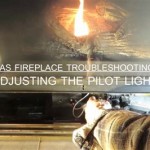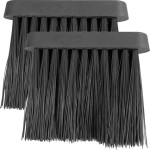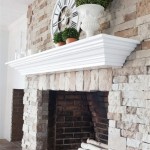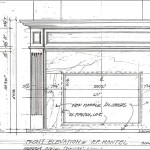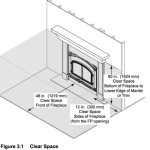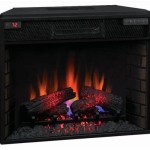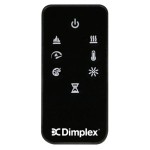Small Propane Fireplace Heaters: A Comprehensive Overview
Small propane fireplace heaters offer a convenient and efficient heating solution for a variety of spaces, from apartments and small homes to cabins and patios. They provide the aesthetic appeal of a traditional fireplace without the mess and maintenance associated with wood-burning units. This article explores the features, benefits, considerations, and safety aspects of small propane fireplace heaters, providing a thorough understanding of these popular heating appliances.
Propane fireplaces operate by burning propane gas, which is readily available in portable tanks. These tanks can be easily connected to the heater using a regulator and hose assembly. The burning propane produces heat, which is dispersed into the surrounding area through various mechanisms, depending on the specific model. Many units incorporate realistic flame effects and simulated embers to mimic the look and feel of a wood-burning fireplace, enhancing the ambiance of the space.
The term "small" in the context of propane fireplace heaters typically refers to their BTU (British Thermal Unit) output and physical dimensions. Smaller units generally produce between 10,000 and 20,000 BTUs, making them suitable for heating rooms ranging from 250 to 500 square feet, depending on insulation and climate. Their compact size also allows for placement in locations where larger, more powerful heaters might be impractical.
The market offers a diverse range of small propane fireplace heaters, categorized by design, installation type, and features. Common types include freestanding models, wall-mounted units, and table-top heaters. Freestanding models are portable and versatile, allowing for easy relocation. Wall-mounted units save floor space and offer a more permanent installation. Table-top heaters are designed for outdoor use, providing warmth and ambiance to patios and decks.
Key Point 1: Advantages of Small Propane Fireplace Heaters
Small propane fireplace heaters offer numerous advantages over other heating options. One significant benefit is their portability. Freestanding models can be easily moved from room to room, providing targeted heating where and when it's needed most. This flexibility makes them ideal for supplemental heating, reducing the need to heat an entire house when only a single room is occupied.
Another advantage is their ease of installation. Unlike wood-burning fireplaces, propane units do not require a chimney or flue, simplifying the installation process. Most models can be installed quickly and easily, often requiring only a connection to a propane tank and a suitable location for placement.
Efficiency is also a key benefit. Propane heaters are typically more efficient than electric space heaters, converting a higher percentage of fuel into usable heat. This can translate into lower heating costs, especially in areas where propane is readily available and competitively priced.
Furthermore, propane fireplaces offer a visually appealing aesthetic. Realistic flame effects and glowing embers create a warm and inviting atmosphere, enhancing the ambiance of any room. The ability to control the flame height and heat output allows for customized comfort and visual appeal.
Finally, propane heaters offer a reliable source of heat during power outages. Unlike electric heaters, they can operate independently of the electrical grid, providing a valuable backup heating solution in emergency situations. This makes them particularly useful in areas prone to power outages or extreme weather conditions.
Key Point 2: Factors to Consider When Choosing a Small Propane Fireplace Heater
Selecting the right small propane fireplace heater requires careful consideration of several factors. The first is the heating capacity, measured in BTUs. The appropriate BTU rating will depend on the size of the room being heated, the level of insulation, and the climate. A general rule of thumb is to choose a heater with approximately 5,000 BTUs per 100 square feet of space. However, this is just a guideline, and adjustments may be necessary based on specific circumstances.
The type of ignition system is another important consideration. Propane fireplaces can use either standing pilot ignition, electronic ignition, or millivolt ignition. Standing pilot ignition uses a continuously burning pilot light to ignite the main burner. While simple and reliable, it consumes a small amount of propane even when the heater is not in use. Electronic ignition uses an electronic spark to ignite the burner, eliminating the need for a pilot light and saving energy. Millivolt ignition systems use a thermocouple to generate a small electrical current that powers the gas valve. They are reliable and do not require an external power source.
Safety features are also crucial. Look for heaters equipped with safety features such as oxygen depletion sensors (ODS), which automatically shut off the heater if oxygen levels in the room become too low. Tip-over switches are also important, as they automatically shut off the heater if it is accidentally knocked over. Certifications from reputable organizations such as CSA or UL ensure that the heater has been tested and meets safety standards.
The design and aesthetics of the heater should also be considered. Choose a style that complements the decor of the room and enhances the overall ambiance. Consider the materials used in the construction of the heater, as this can affect its durability and appearance. Some models feature realistic-looking logs, while others have a more modern, minimalist design.
Finally, consider the ease of use and maintenance. Look for heaters with user-friendly controls and clear instructions. Regular maintenance, such as cleaning the burner and venting system, is necessary to ensure optimal performance and safety. Choose a heater that is easy to maintain and service.
Key Point 3: Installation, Operation, and Safety Guidelines
Proper installation is essential for the safe and efficient operation of a small propane fireplace heater. Always follow the manufacturer's instructions carefully when installing the heater. Ensure that the heater is placed on a level, non-combustible surface, away from flammable materials such as curtains, furniture, and paper.
When connecting the propane tank, use a regulator and hose assembly that is specifically designed for use with propane appliances. Ensure that all connections are tight and leak-free. Check for leaks using a soapy water solution. Apply the solution to the connections and look for bubbles. If bubbles appear, tighten the connections or replace the hose and regulator as needed.
Proper ventilation is crucial when operating a propane fireplace heater. While modern units are designed to burn propane cleanly, it is still important to provide adequate ventilation to prevent the buildup of carbon monoxide. Ensure that the room is well-ventilated by opening a window or door slightly. Consider installing a carbon monoxide detector to provide an early warning of any potential problems.
Never leave a propane fireplace heater unattended while it is in operation. Turn off the heater and disconnect the propane tank when leaving the room or going to bed. Keep children and pets away from the heater to prevent burns and accidents.
Regular maintenance is essential for ensuring the safe and efficient operation of a propane fireplace heater. Clean the burner and venting system periodically to remove any dust or debris that may have accumulated. Inspect the hose and regulator for any signs of wear or damage. Replace any worn or damaged parts immediately.
Always store propane tanks in a well-ventilated area, away from heat sources and direct sunlight. Never store propane tanks indoors or in enclosed spaces. Follow all local regulations and guidelines for the storage and handling of propane tanks.
By following these installation, operation, and safety guidelines, users can enjoy the warmth and ambiance of a small propane fireplace heater safely and efficiently.

Comparing Wood And Propane Heat Tiny Stove

Mini Franklin Soapstone Gas Stove Woodstove

Comparing Wood And Propane Heat Tiny Stove

Mini Franklin Soapstone Gas Stove Woodstove

Thelin Gnome Gas Stove Hearth S Great American Fireplace In Menomonie Wi

Heating Micro Showcase

Propane Freestanding Stoves From Stewart S Hearth In Miramichi

Small Fireplaces Friendly Fires

Propane Freestanding Stoves From Stewart S Hearth In Miramichi

Non Electric Tiny Home Heating Options Life Gear

